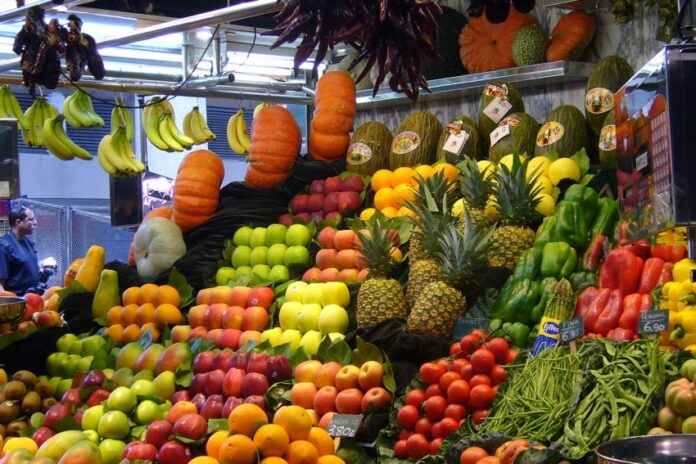I feel my chest tighten ever so slightly as I inch closer to the produce stall in my neighborhood market. It has become abundantly clear these last few weeks that my favorite fruit — the one I eat daily to break my overnight fast — is drifting out of season. Coveted piles of yellow, juicy mangos are now being replaced by other, less exciting, less tropical fruits, and a certain wave of sadness washes over me. I rummage through what’s left of the golden globes, filling my tray with as many as I can reasonably lug back to my apartment, and pick my jaw up off the floor when I hear the price. Because, along with a dwindling supply, the cost has doubled.
My addiction to mangos followed me from my previous home in Miami to my current one in Mexico. I eat them every day and love everything about the mango experience – choosing the best ones, washing them, cutting them, eating half of what I cut while I’m cutting, and then sitting down to a big bowl for my late breakfast. How can one not love the color, the smell and the variety of flavors one little fruit can produce? So when mango season inevitably crawls to a stop, I get that feeling I used to get at the end of summer as a kid: a blend of loss, acceptance, and hope for a brighter future.
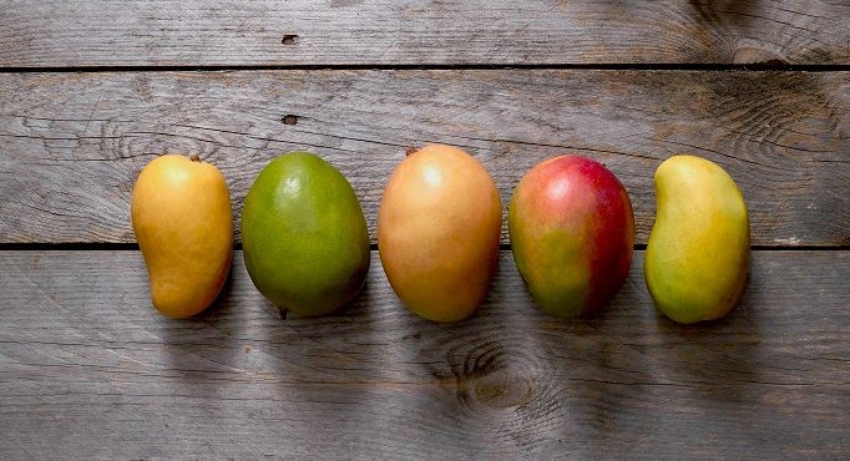
I also get a feeling akin to a mild panic. What am I going to eat from now until March? In my quest to find a temporary replacement, I’ve compiled a list of fruits available over the winter. I’m happy to report that there are more than a handful of viable alternatives — get your shopping bags ready and hit the market with this handy guide to Mexican fruits in winter!
Winter Mexican Fruits Guide
Pitahaya (Dragon Fruit)
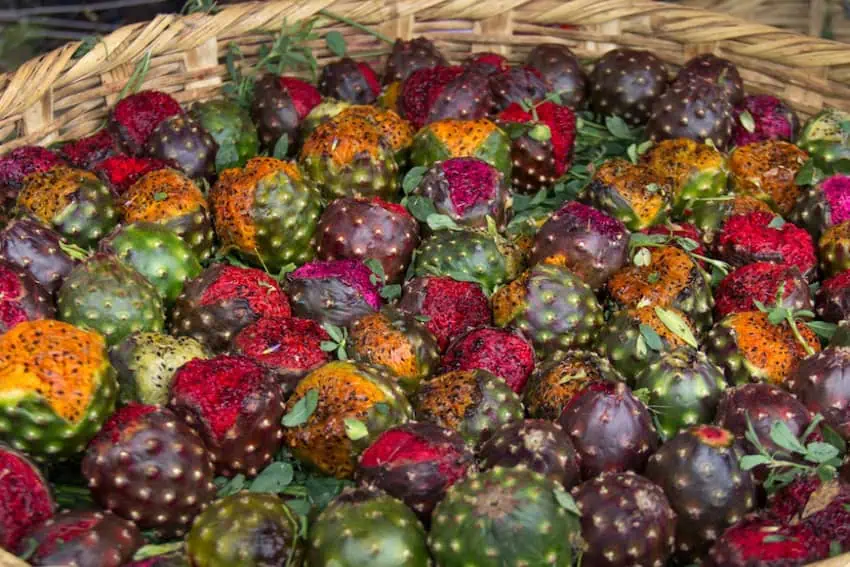
An exotic fruit from a cactus species, also called a strawberry pear. The flesh can be white or red with black seeds, and the exterior varies from bright pink to yellow.
Season: Peak harvest is late summer and early autumn
Origin: Wild pitaya is native to Jalisco, Michoacán, Oaxaca, Guerrero and Puebla
Benefits: High in fiber, magnesium, vitamins C, E, riboflavin and antioxidants; supports immune function and antioxidant defenses
Historical Significance: Dragon fruit has been cultivated by Indigenous peoples of Mexico for centuries. The Mexica and other pre-Hispanic civilizations valued pitaya both as food and medicine, often using it in religious ceremonies and as a natural remedy for various ailments like dehydration, heart disease and gastritis.
How to Know When Ripe: The skin should yield slightly to gentle pressure and have vibrant, even coloring. The scales (bracts) on the exterior should be bright and not wilted. Avoid fruits with dark spots, cracks or overly soft areas. A ripe pitaya will have a mild, sweet fragrance at the stem end.
Poblano Pears (pera Poblana)
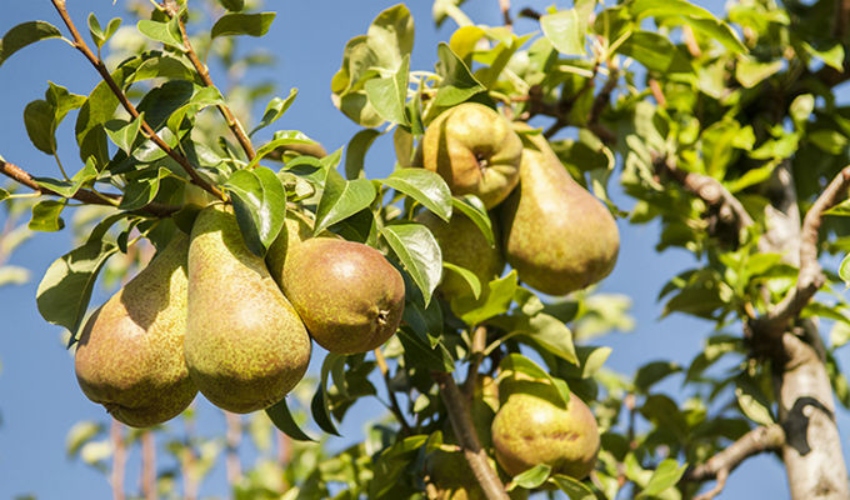
Sweet, juicy and highly aromatic pears with subtle floral notes and a pleasant, tender texture that works well both fresh and cooked.
Season: Late August through November
Origin: Puebla
Benefits: Source of dietary fiber, vitamins C and K, potassium and antioxidants; promotes healthy digestion and supports heart and eye health
Historical Significance: Poblano pears are deeply rooted in the agricultural traditions of Puebla. They became particularly important in colonial Mexico as Spanish settlers adapted European pear-growing techniques to local conditions, creating this distinct regional variety.
How to Know When Ripe: The pear should yield slightly to pressure near the stem end. The skin will have a golden-yellow color with a possible red blush. Ripe poblano pears emit a sweet, floral fragrance.
Guava (Guayaba)
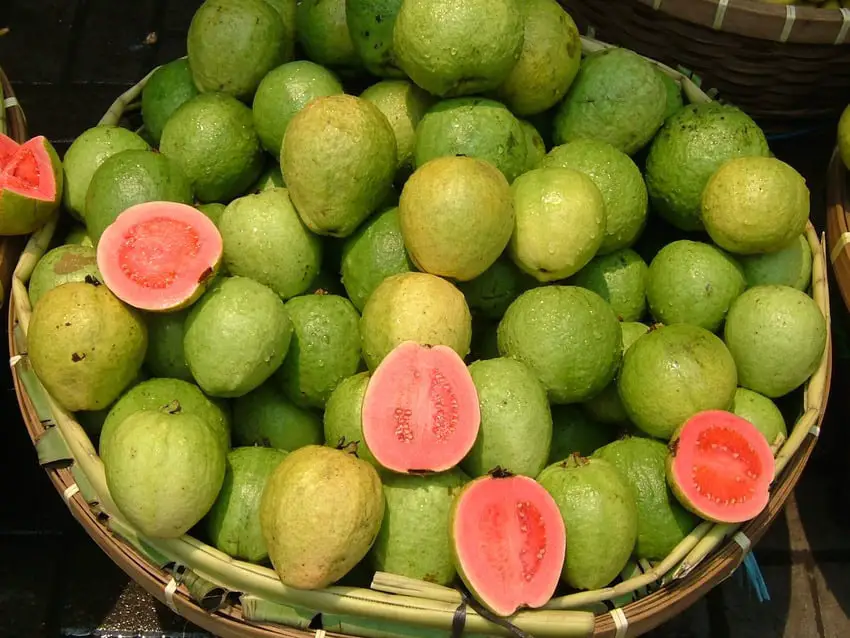
A tropical berry with yellow or green skin and pink or white pulp, known for its distinctive sweet-tart flavor and strong aroma.
Season: Harvested and sold primarily in autumn and winter
Origin: Cultivated in Michoacán, Aguascalientes, Zacatecas and Puebla
Benefits: Very high in vitamin C (more than citrus fruits), fiber and antioxidants; supports immunity and digestion
Historical Significance: Guava has been consumed in Mexico since pre-Hispanic times. Indigenous peoples used the fruit fresh to make beverages and preserves. Spanish colonizers quickly adopted guava, and it became integral to Mexican cuisine, particularly in traditional sweets like até de guayaba.
How to Know When Ripe: Ripe guavas yield to gentle pressure and have a strong, sweet fragrance. The skin should be yellow or light green without dark spots. The fruit should feel heavy for its size and give slightly when pressed, similar to a ripe avocado.
Mamey
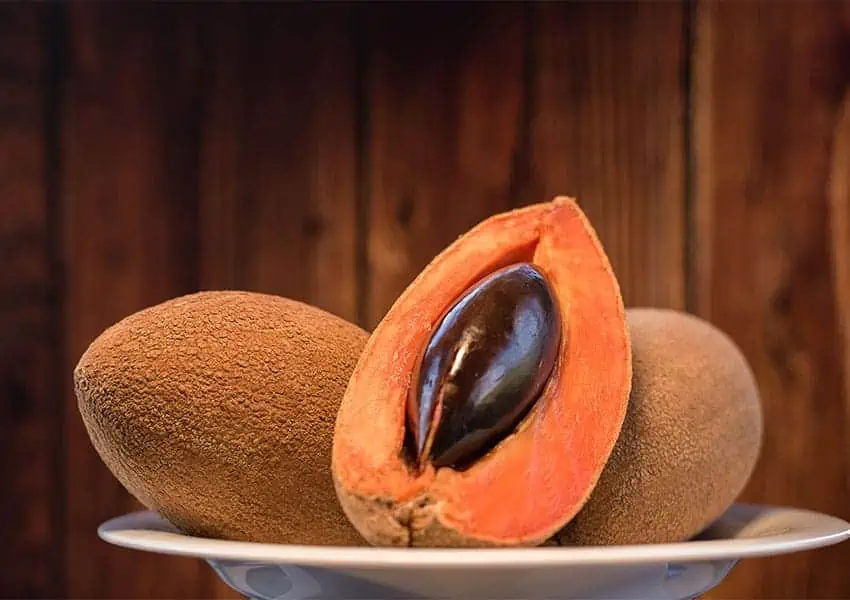
A sweet fruit with custard-like consistency, pink flesh and a flavor often compared to a sweet potato or pumpkin with hints of vanilla.
Season: September to December
Origin: Traditionally grown in Veracruz, Tabasco, Yucatán and Chiapas
Benefits: Rich in vitamins A, C, E, potassium and fiber; supports eye health and immune function
Historical Significance: Mamey was sacred to the Maya civilization, which believed it had divine properties. Archaeological evidence shows mamey seeds in Maya burial sites, indicating their spiritual significance. The fruit played important roles in mythology and was often depicted in their art and codices.
How to Know When Ripe: A ripe mamey yields to gentle pressure, similar to a ripe avocado. The skin may have small scratches or scuff marks when ripe. When you scratch the surface lightly, it should reveal the salmon-pink flesh underneath. The fruit should feel heavy and have a slightly sweet aroma.
Black Zapote
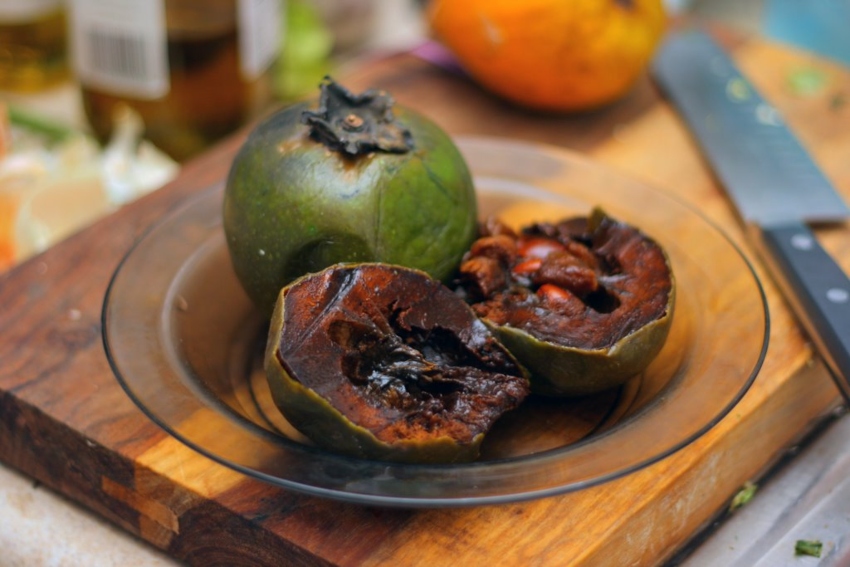
A fruit with black, custard-like flesh when ripe, often called “chocolate pudding fruit” due to its dark color and sweet, chocolate-like flavor.
Season: September to December
Origin: Most common in Veracruz and Guerrero
Benefits: High in vitamin C, fiber and potassium; low in fat and calories
Historical Significance: Black sapote was cultivated by Indigenous peoples of Southern Mexico and Central America for thousands of years. The Mexica called it “tliltzapotl” and valued it both as food and for its medicinal properties, particularly for digestive health.
How to Know When Ripe: The fruit should be very soft to the touch, almost squishy. The skin will be dark green to black and may appear wrinkled. When fully ripe, it should yield easily to pressure all around. Unripe black sapote is astringent and inedible.
Passion Fruit (Maracuyá)
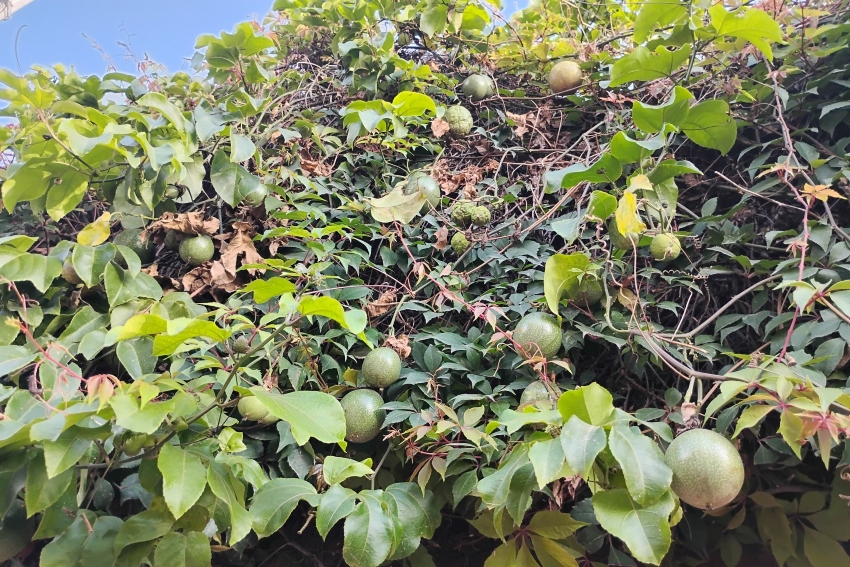
A round or oval fruit with tough, wrinkled skin containing aromatic seeds surrounded by tart, flavorful pulp. Common varieties include the purple passion fruit and the larger, yellow variety.
Season: August through the end of October
Origin: Cultivated in tropical regions like Chiapas and the Yucatán Peninsula states
Benefits: High in vitamins A and C, fiber and beneficial plant compounds; supports immune health
Historical Significance: Passion fruit was introduced to Mexico from South America during colonial times. Spanish missionaries named it “passion fruit” because they saw religious symbolism in the flower’s structure. It quickly became integrated into Mexican tropical cuisine and traditional medicine.
How to Know When Ripe: The skin should be deeply wrinkled and give slightly to pressure. Purple varieties should be dark purple, while yellow varieties should be golden. A ripe passion fruit will feel heavy for its size and may sound liquid when shaken gently.
Cherimoya (Anona)
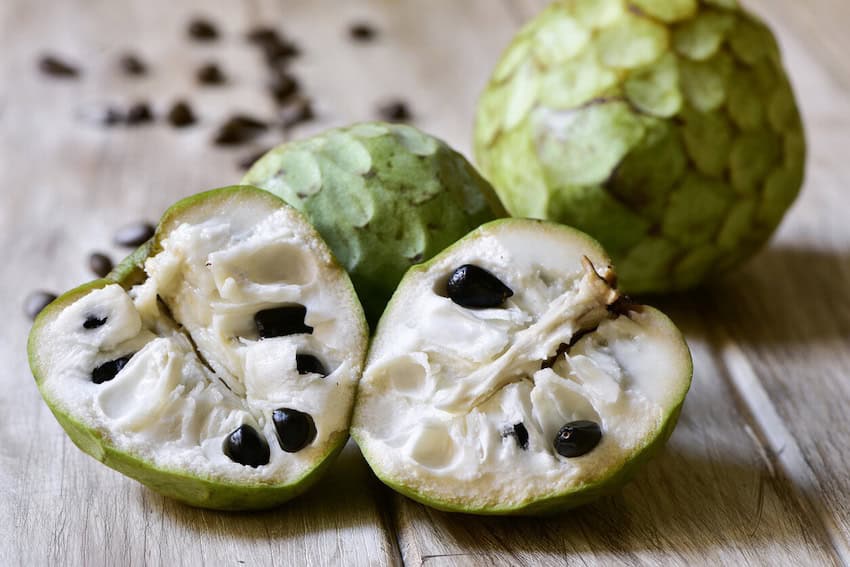
A heart-shaped fruit from the custard-apple family with creamy, white pulp and tropical notes, often compared to a blend of banana, pineapple and vanilla.
Season: Winter through spring
Origin: Native to and grown in Morelos, Puebla and Oaxaca
Benefits: High in vitamin C, B6, fiber and antioxidants; supports immune function and digestive health
Historical Significance: Cherimoya was cultivated by pre-Hispanic civilizations in the highlands of Mexico and was considered a delicacy among Indigenous peoples. Spanish colonizers called it “the masterpiece of nature” due to its exceptional flavor and creamy texture.
How to Know When Ripe: The fruit should yield to gentle pressure, similar to a ripe avocado. The skin may show brown patches or spots when ripe. It should have a sweet, fragrant aroma. Avoid fruits with dark, sunken spots.
Sapodilla (Chicozapote)
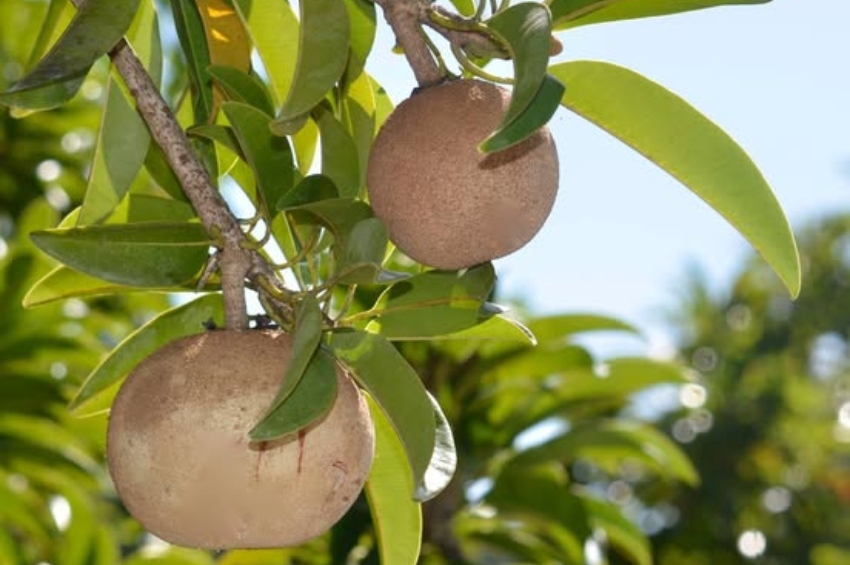
A round to oval fruit with rough, brown skin and sweet, brown flesh with a texture similar to a pear and flavors reminiscent of brown sugar and cinnamon.
Season: Winter through spring
Origin: Yucatán, Campeche, Quintana Roo and Tabasco
Benefits: Rich in vitamins A, C, dietary fiber and natural sugars; supports digestive health and provides sustained energy
Historical Significance: Sapodilla was a staple food of the ancient Maya civilization, who also harvested the tree’s latex to make chewing gum (chicle). The Maya considered the sapodilla tree sacred and used various parts of the tree for food, medicine, and construction materials.
How to Know When Ripe: The fruit should yield to gentle pressure and have a sweet, honey-like fragrance. The skin should be brown and may feel slightly rough. When ripe, it should feel similar to a ripe pear. Unripe sapodilla has a chalky texture and astringent taste.
Bethany Platanella is a travel planner and lifestyle writer based in Mexico City. She lives for the dopamine hit that comes directly after booking a plane ticket, exploring local markets, practicing yoga and munching on fresh tortillas. Sign up to receive her Sunday Love Letters to your inbox, peruse her blog or follow her on Instagram.
